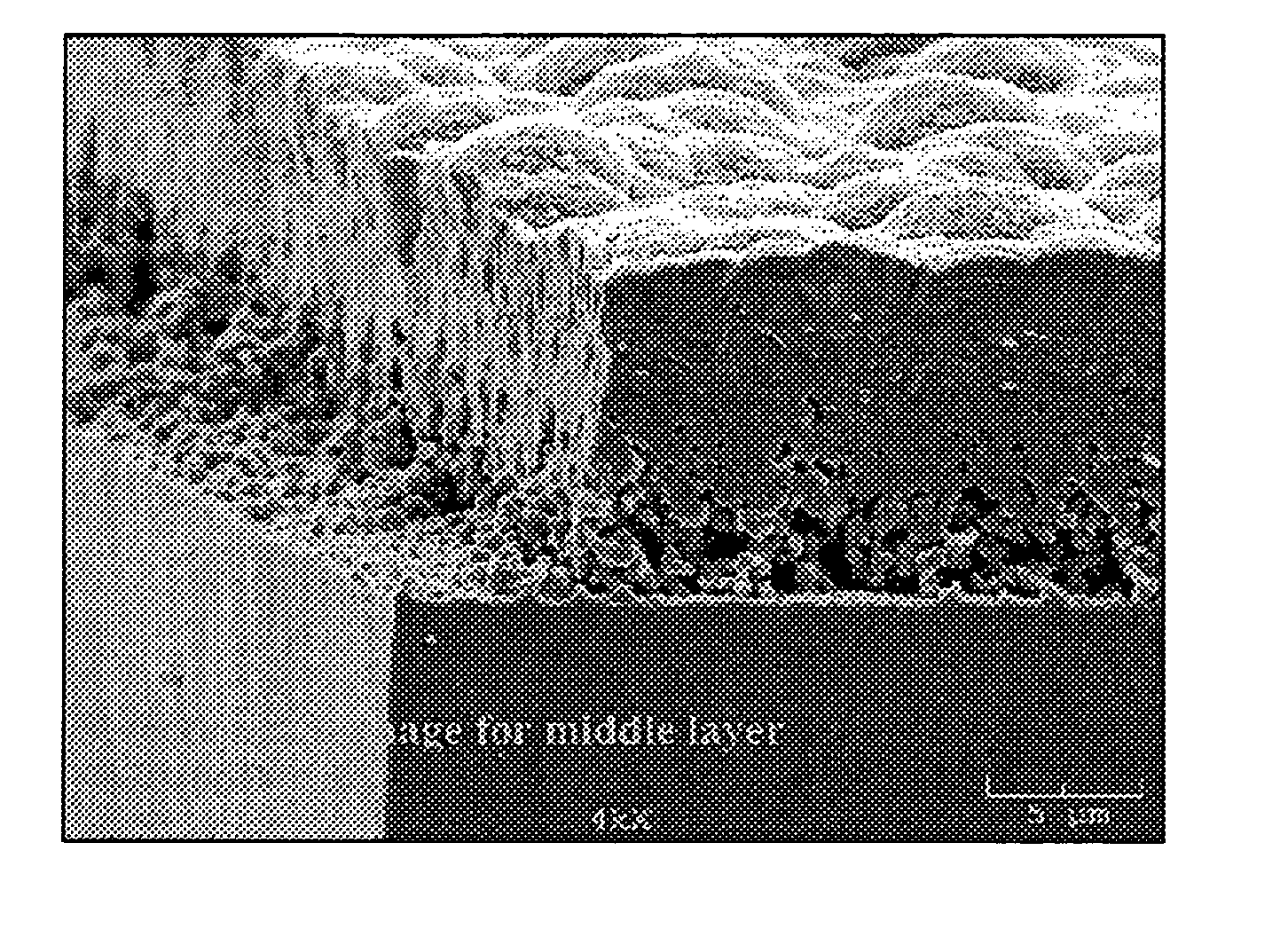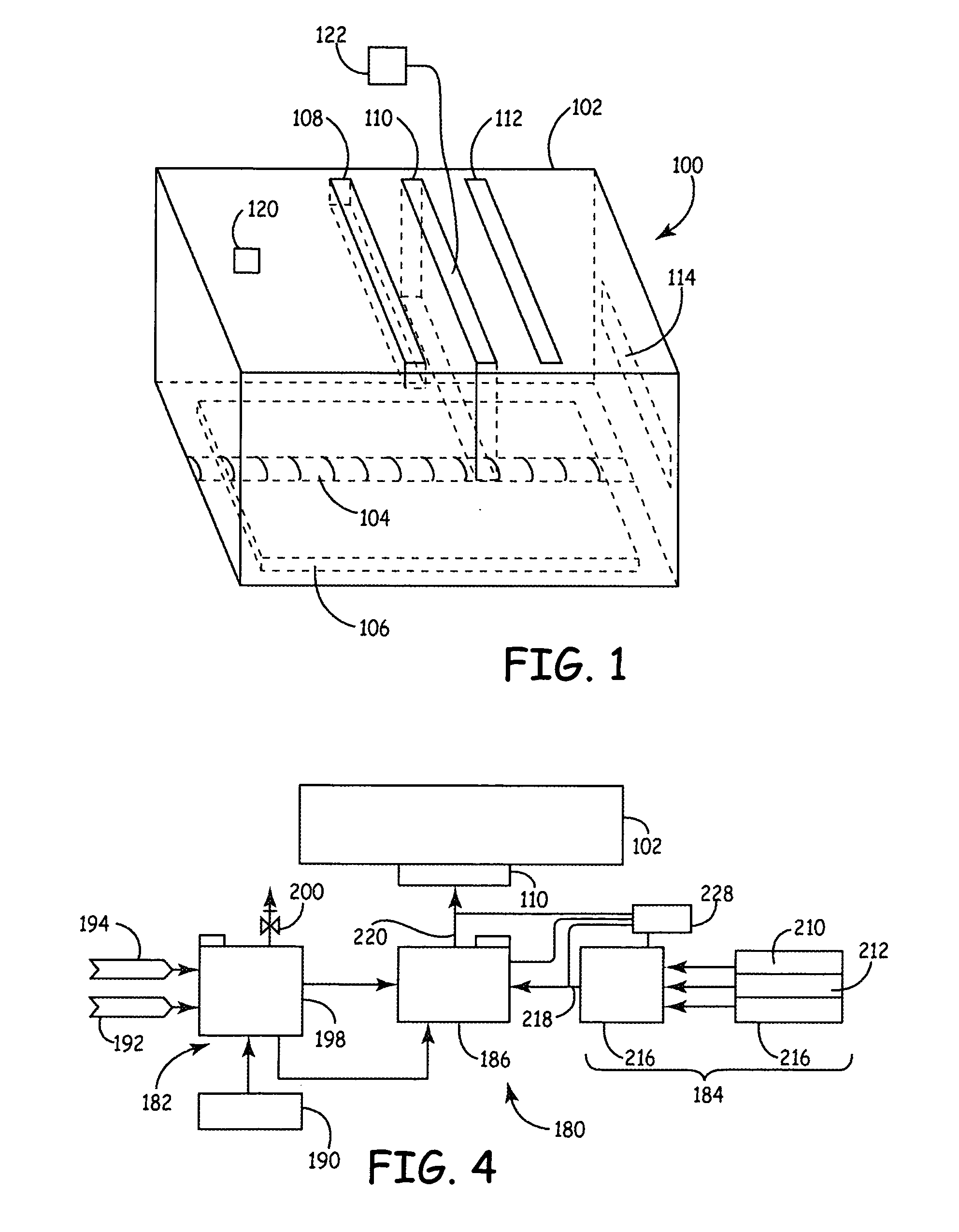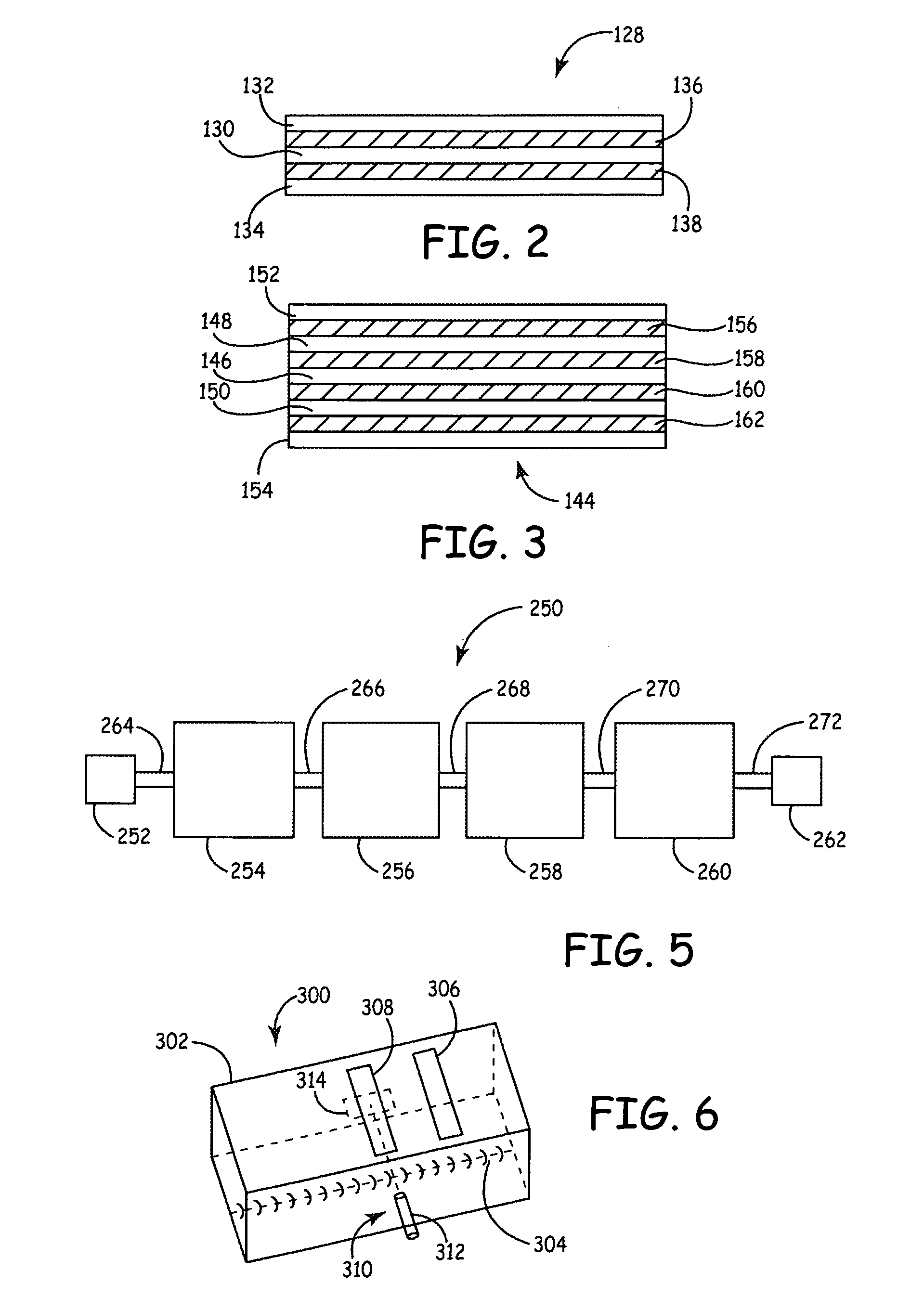Reactive flow deposition and synthesis of inorganic foils
a technology of inorganic foils and reactive fluxes, which is applied in the direction of chemically reactive gases, solid-state diffusion coatings, record information storage, etc., can solve the problems that renewable energy sources do not produce green house gases, and achieve the effects of facilitating reaction, enhancing particulate release layers, and reducing the formation of vapors
- Summary
- Abstract
- Description
- Claims
- Application Information
AI Technical Summary
Benefits of technology
Problems solved by technology
Method used
Image
Examples
example 1
Scanning Sub-Atmospheric Pressure CVD onto a Release Layer
[0132]This example demonstrates the ability to deposit a high quality silicon foil layer using scanning sub-atmospheric pressure CVD onto a release layer formed using light reactive deposition.
[0133]The depositions were performed in a reactor essentially as described in published U.S. patent application 2007 / 0212510, filed Mar. 13, 2007 to Hieslmair et al., entitled “Thin Silicon or Germanium Sheets and Photovoltaics Formed From Thin Sheets,” incorporated herein by references. The CVD deposition was performed with the laser turned off using the same reactant supply system with appropriately selected reactants delivered for the particular deposition process.
[0134]A stack of deposited layers is shown in the FIG. 8. Starting from the bottom of the micrograph, the layers can be identified as follows: substrate, micron porous silicon nitride layer formed with light reactive deposition and a dense CVD silicon film. Two other repres...
example 2
Separation of Silicon Foil at the Release Layer
[0136]This example demonstrates the ability to separate a silicon foil through the fracture of a porous particulate release layer.
[0137]A series of depositions was performed to form a structure essentially as described above with respect to FIG. 9. In general, samples have been formed generally at about 600 Torr or lower pressures with layers generally within the ranges of 10 to 40 microns of porous particulate silicon nitride formed by light reactive deposition, 5 to 10 microns of SSAP-CVD silicon nitride, about 35 microns of SSAP-CVD silicon and a thin silicon nitride capping layer. After deposition, the silicon was subjected to a zone melt recrystallization process. In the ZMR process, the structure was scanned past a radiant heater to melt the silicon, which subsequently recrystallizes as the material cools. A photograph of the resulting structure is shown in FIG. 11.
[0138]To perform the separation, a crosslinking ethylenevinylaceta...
PUM
| Property | Measurement | Unit |
|---|---|---|
| pressure | aaaaa | aaaaa |
| pressure | aaaaa | aaaaa |
| pressure | aaaaa | aaaaa |
Abstract
Description
Claims
Application Information
 Login to View More
Login to View More - R&D Engineer
- R&D Manager
- IP Professional
- Industry Leading Data Capabilities
- Powerful AI technology
- Patent DNA Extraction
Browse by: Latest US Patents, China's latest patents, Technical Efficacy Thesaurus, Application Domain, Technology Topic, Popular Technical Reports.
© 2024 PatSnap. All rights reserved.Legal|Privacy policy|Modern Slavery Act Transparency Statement|Sitemap|About US| Contact US: help@patsnap.com










